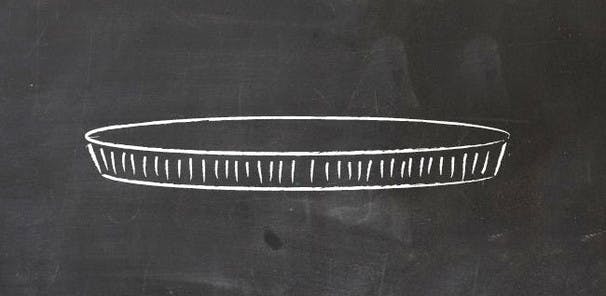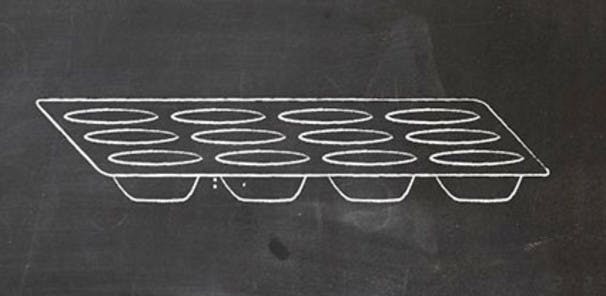
Bakeware Buying Guide
Expert guide to bakeware
Baking cakes with family is often the first step we take into the world of cooking, so there's a lot of nostalgia wrapped up in home baked treats. Do your memories justice and get the best from your kitchen skills with our expert guide to bakeware.
There is quite a difference between entry level and premium quality baking trays, but this sloping scale makes baking an accessible hobby for any pocket. Once you've honed your skills you can always swap your cheaper tins for longer lasting pieces!
Usage
Quiche & Flan Tins - Ideal for pies, tarts and flans. Flan tins usually feature a unique design with vertically rippled sides, though can have straight sides. Given a non-stick coating so you can remove your pie case without damaging the delicate pasty, flan tins are made from metal for even heat distribution and an even bake. Loose-based flan tins make it easy to remove freshly baked contents as the base can be pushed out from underneath, applying equal pressure to the underside and lifting the pie cleanly out of the pan.
Muffin & Cupcake Trays - Ideal for muffins and cookies. When baking muffins and cupcakes you'll need to use individual cake cases, but when pouring cake batter into the case you may notice the weight causes the paper cups to spread and sag at the sides. The individual depressions of a muffin tin provide the perfect size and shape to drop cake cases into, providing structure and surrounding them with an even heat that will allow your cakes to rise upwards rather than outwards during baking.
Cake Tins - Ideal for baking cakes of all shapes and sizes. Cake tins are available in a wide range of sizes and shapes, and recipes will usually specify the diameter of tin to use. This is because the cooking time will be calculated precisely for the size and consistency of the cake mix, so using a different size cake tin may require a change to baking time.
Oven Tray - Ideal for cookies and biscuits. A fantastically multi-purpose accessory for home baking, oven trays and baking sheets provide a versatile wide flat surface. Non-stick coatings make baking trays handy for batches of cookies and biscuits as these shallow baked goods can be removed easily from the surface. To keep cleaning up to a minimum baking trays are often paired with a foil, greaseproof paper or silicone lining.
Baking Stone - Ideal for use on the hob or oven, pizzas, home-made breads and welsh cakes. Baking stones allow you to recreate traditional hot stone cooking at home, made from ceramic or terracotta with a glazed coating to reduce sticking. Baking stones are ideal for home-made loaves and bread rolls, providing even heat and drawing moisture away, minimise burning and giving a crisp crust.
Three main types of cake tin exist
Basic cake tins
These tins are made from one piece of material, moulded into the shape your cake will take. As they are a single piece, basic cake moulds can be used to create special shapes, like the ring shaped cake created by bundt tins, though the simpler shapes of loaf tins or sandwich tins are more common. It can be tricky to extract delicate sponges from these kind of cake tins without damaging them, so effective lining or greasing of the interior is key.
Loose based cake tins
These tins have two parts, a solid side piece and base which rests snugly on a lip that curls underneath from the side piece. During baking, the weight of the cake mix holds the base securely in place within the tin to stop any leaking. Once baking is complete, loose based tins make removal much easier than with a basic tin, by applying upwards pressure to the bottom piece to free.
Spring form cake tins
These tins also feature a two part design of a base and side piece. The side piece gives the tin its name, featuring a ring with a mechanism that can be secured to the base and locked in place. As the side piece can be opened and closed at will, it's easy to loosen and lift the cake tin from the baked contents without damaging them.
Materials
Ceramic
- Non-stick surface and PTFE free
- Scratch resistant
- Hardwearing, strong and durable
A good candidate for handling extreme temperatures and even heat distribution during the cooking process, ceramic bakeware is versatile and can be used to bake and serve. Crafted from clay then fired in a kiln before often being coated in a non-porous glaze to seal the surface, ceramic or stone bakeware is fairly non-stick so requires little oil or butter.
Aluminium
- Good thermal conductivity
- Lightweight metal
- A non-stick coating reduces the need for lining with oil or butter
Aluminium bakeware is the most commonly used and is popular due to its excellent heat conduction and low cost. Particularly favoured for specialist cake tins and beginner bakers, it's lightweight handling and economical nature makes it ideal for all baking needs. Most aluminium cookware is coated with a finish, or is anodized. Anodized aluminium has been treated with an electrolytic process that makes it harder and more robust.
Glass / Borosilicate glass
- Excellent heat conduction
- Non-porous and non-stick for easy cleaning
- Strengthened to be stable in extreme hot and cold temperatures
Easy to clean and requiring little oil, glass bakeware can speed up cooking time as the material absorbs heat instead of reflecting it. A clear base and sides provide excellent all round visibility during baking to avoid under or over cooking. Oven safe glassware has been treated to withstand oven temperatures but is still sensitive to sudden changes, so use a cooling rack when removing hot glass from the oven to avoid it coming into contact with any very cold surfaces and shattering.
Silicone
- Extremely lightweight and flexible, easy to store
- Fast, even heat distribution
- Oven safe to 250
Oven, microwave, freezer and dishwasher safe, silicone bakeware is totally flexible, extremely durable, and lightweight and can withstand the sudden and extreme temperature change from freezer directly to the oven or microwave. The flexibility of the silicone means it's advisable to use place the pan on a metal baking tray during use for added stability. Silicone bakeware can be used with metal utensils but will become punctured or torn if used with knives or sharp edges. As it conducts heat rapidly and evenly the cooking process is aided substantially, with cooking and cooling often occurring faster. This can mean that recipe cooking times and temperatures may vary from traditional metal bakeware, so keep a close eye on the contents during baking if you are unsure. Apply a thin layer of cooking oil spray or other cooking fat to the surface prior to use and fill the bakeware evenly with the mixture to improve performance and aid release after baking.
Coatings
Non stick
Essential for any modern kitchen, non-stick coatings help you remove your baked items from the surface easily and reduce the need for oil or butter. Available in single, double or triple layers with increasing durability, non-stick coatings need to be taken care of to get the best from them.
ⓘ Teflon® is the brand name for the original non-stick coating
Enamel
Glossy in appearance, a layer of enamel is fused to a metal base to create a long life coating. This long-lasting non-stick surface minimises the need for oil or butter in greasing your baking tins and makes for easy cleaning.




